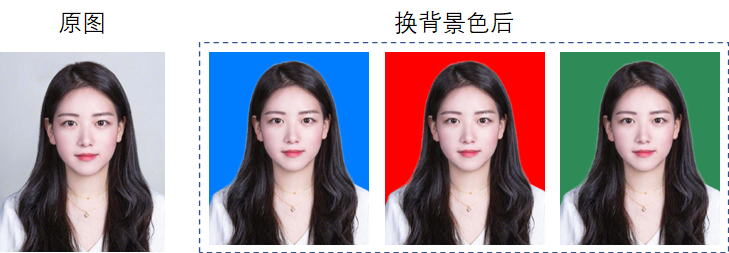有些工具用python来实现不一定是技术上的最优选择,但可能是最简洁、最面向大众的。
介绍几个不错的处理图像的案例,并附上代码,尽可能让大家能拿来就用。
1、生成手绘图片
现在很多软件可以将照片转换成手绘形式,python也可以实现,而且定制化更强,可批量转换。
这里用到pillow库,这是非常牛逼且专业的Python图像处理库
原图:

生成手绘后:

代码:
- # -*- coding: UTF-8 -*-
- from PIL import Image
- import numpy as np
- # 原始图片路径
- original_image_path = "E:\\图片\\陆家嘴.jpg"
- # 要生成的手绘图片路径,可自定义
- handdrawn_image_path = "E:\\图片\\陆家嘴-手绘.jpg"
- # 加载原图,将图像转化为数组数据
- a=np.asarray(Image.open(original_image_path).convert('L')).astype('float')
- depth=10.
- #取图像灰度的梯度值
- grad=np.gradient(a)
- #取横纵图像梯度值
- grad_x,grad_y=grad
- grad_x=grad_x*depth/100.
- grad_y=grad_y*depth/100.
- A=np.sqrt(grad_x**2+grad_y**2+1.)
- uni_x=grad_x/A
- uni_y=grad_y/A
- uni_z=1./A
- #光源的俯视角度转化为弧度值
- vec_el=np.pi/2.2
- #光源的方位角度转化为弧度值
- vec_az=np.pi/4.
- #光源对x轴的影响
- dx=np.cos(vec_el)*np.cos(vec_az)
- dy=np.cos(vec_el)*np.sin(vec_az)
- dz=np.sin(vec_el)
- #光源归一化,把梯度转化为灰度
- b=255*(dx*uni_x+dy*uni_y+dz*uni_z)
- #避免数据越界,将生成的灰度值裁剪至0-255内
- b=b.clip(0,255)
- #图像重构
- im=Image.fromarray(b.astype('uint8'))
- print('完成')
- im.save(handdrawn_image_path)
这里可以做成批量处理的转手绘脚本,大家试试。
2、生成证件照
这里用到pillow和removebg,分别用于修改照片尺寸和抠图。
这里removebg用到了AI技术,抠图边缘很柔和,效果挺不错的。

代码:
- # encoding=utf-8
- from PIL import Image
- from removebg import RemoveBg
- # removebg涉及到api_key,需要到其官网申请
- api_key = 'PysKLJueeoyK9NbJXXXXXXXXX'
- def change_bgcolor(file_in, file_out, api_key, color):
- '''
- #必须为png格式
- '''
- p, s = file_in.split(".")
- rmbg = RemoveBg(api_key, 'error.log')
- rmbg.remove_background_from_img_file(file_in)
- file_no_bg = "{}.{}_no_bg.{}".format(p, s, s)
- no_bg_image = Image.open(file_no_bg)
- x, y = no_bg_image.size
- new_image = Image.new('RGBA', no_bg_image.size, color=color)
- new_image.paste(no_bg_image, (0, 0, x, y), no_bg_image)
- new_image.save(file_out)
- # 修改照片尺寸
- def change_size(file_in, file_out, width, height):
- image = Image.open(file_in)
- resized_image = image.resize((width, height), Image.ANTIALIAS)
- resized_image.save(file_out)
- if __name__ == "__main__":
- file_in = 'E:\\girl.png'
- file_out = 'E:\\girl_cutout.png'
- # 尺寸可按需求自修改
- # change_size(file_in, file_out, width, height)
- # 换背景色
- color = (0, 125, 255)
- change_bgcolor(file_in, file_out, api_key, color)
3、生成艺术二维码
现在有不少二维码生成工具,python也有一款二维码生成库-myqr,可以给二维码加上图片背景,看起来很炫,效果如下

使用pip安装myqr,非常简单。
该库可以在命令行中运行,你只需要传递网址链接、图片地址等参数,就可以生成相应的二维码,二维码图片默认保存在当前目录下面。
命令行输入格式:
myqr 网址链接
比如:
- myqr https://zhuanlan.zhihu.com/pydatalysis
再按enter键执行,就能生成对应链接的二维码了。
怎么融合图片呢?很简单,传入图片地址参数'-p'
比如说我d盘有一张海绵宝宝的图片,地址是:d:\hmbb.jpg即传入参数'-pd:\hmbb.jpg'在命令行键入:
- myqr https://zhuanlan.zhihu.com/pydatalysis -p d:\hmbb.jpg -c
执行就能生成上图的海绵宝宝主题二维码了。
4、生成词云图
词云图一般用来凸显文本关键词,产生视觉上的焦点,利用好词云会让数据更加有说服力。
python也有专门制作词云的库-wordcloud,能自定义颜色和形状。
比如我用小丑的豆瓣评论做成一张词云图。

作词云图,首先要对收集文本,然后对文本做分词处理,最后生成词云。
这里不对前两步做详细解析,只给出词云代码:
- def wordCloudImage(wordlist,width,height,bgcolor,savepath):
- # 可以打开你喜欢的词云展现背景图
- # cloud_mask = np.array(Image.open('nezha.png'))
- # 定义词云的一些属性
- wc = WordCloud(
- width=width, # 图幅宽度 900
- height=height, # 图幅高度 3000
- background_color=bgcolor, # 背景图分割颜色为白色 "black"
- # mask=cloud_mask, # 背景图样
- max_words=300, # 显示最大词数
- font_path='./fonts/simhei.ttf', # 显示中文
- collocations=False,
- # min_font_size=5, # 最小尺寸
- # max_font_size=100, # 最大尺寸
- )
- # wordfile是分词后的词汇列表
- x = wc.generate(wordlist)
- # 生成词云图片
- image = x.to_image()
- # 展示词云图片
- image.show()
- # savepath是图片保存地址,保存词云图片
- wc.to_file(savepath)
5、生成微信九宫格图片
有段时间朋友圈比较流行九宫格图片,就是一张图分割成九张图,看着似乎很文艺。
这个可以用很多软件来做,python当然也能实现,只需不到50行代码。

代码:
- # 朋友圈九宫格图片制作
- # encoding=utf-8
- from PIL import Image
- import sys
- # 先将input image 填充为正方形
- def fill_image(image):
- width, height = image.size
- # 选取原图片长、宽中较大值作为新图片的九宫格半径
- new_image_length = width if width > height else height
- # 生产新图片【白底】
- new_image = Image.new(image.mode, (new_image_length, new_image_length), color='white')
- # 将原图粘贴在新图上,位置为居中
- if width > height:
- new_image.paste(image, (0, int((new_image_length - height) / 2)))
- else:
- new_image.paste(image, (int((new_image_length - width) / 2), 0))
- return new_image
- # 将图片切割成九宫格
- def cut_image(image):
- width, height = image.size
- # 一行放3张图
- item_width = int(width / 3)
- box_list = []
- for i in range(0, 3):
- for j in range(0, 3):
- box = (j * item_width, i * item_width, (j + 1) * item_width, (i + 1) * item_width)
- box_list.append(box)
- image_list = [image.crop(box) for box in box_list]
- return image_list
- # 保存图片
- def save_images(image_list):
- index = 1
- for image in image_list:
- image.save('e:\\图片\\'+str(index) + '.png', 'PNG')
- index += 1
- if __name__ == '__main__':
- file_path = "e:\\图片\\龙猫.jpg"
- image = Image.open(file_path)
- # image.show()
- image = fill_image(image)
- image_list = cut_image(image)
- print(len(image_list))
- save_images(image_list)
python还可以做很多有趣的图像处理,大家可以玩起来!
原文地址:https://mp.weixin.qq.com/s?__biz=MzA3ODYwNDkzOQ==&mid=2659064501&idx=1&sn=b05192fed02526f2626edc7585eecb50&chksm=84ca8551b3bd0c477d9d004340e3b095111fe20174ab4e377a452c0f58cac19b256c2b01716e&mpshare=1&










